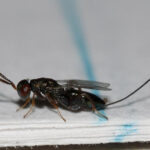Ring-necked pheasants are a familiar sight in many parts of the world, known for their striking plumage and ground-dwelling habits. A common question that arises when observing these birds is: Do Pheasants Fly? The answer is yes, pheasants are indeed capable of flight, and while they may prefer to run and hide, they are surprisingly adept fliers when the situation calls for it.
Identifying the Ring-Necked Pheasant
Before delving into their flight capabilities, understanding the physical characteristics of pheasants is helpful. Male ring-necked pheasants, often called roosters, are visually striking birds. They boast a vibrant array of colors including gold, brown, green, purple, and white feathers. A defining feature is the white ring around their neck, giving them their name. Roosters also have a blueish-green head adorned with a distinctive red wattle. Females, or hens, are more camouflaged with drab brown feathers, an adaptation that aids in nesting and protecting their young. This difference in appearance, known as sexual dimorphism, is common in many bird species.
Pheasant Ecology and Behavior
Pheasants are typically found alone or in small groups. Family units, consisting of a mother hen and her brood, often remain together until early autumn. Despite their ability to fly, pheasants are primarily terrestrial birds, spending the majority of their lives on the ground. They are rarely seen in trees, preferring ground cover for foraging and shelter. Their diet is diverse, consisting of insects, seeds, and leaves, reflecting their adaptable nature.
When it comes to movement, pheasants prefer to run. They are fast runners and will readily use this mode of locomotion to escape danger or navigate their surroundings. However, pheasants are well-equipped for flight and will take to the air when necessary. If startled or feeling threatened, they will explode into the sky in what is known as a “flush.” This sudden burst of flight is often accompanied by a loud, whirring sound of their wings, which can be quite startling to both predators and humans.
Pheasant Flight Speed and Abilities
While pheasants may not be endurance fliers, they are capable of rapid bursts of speed. When cruising, their flight speed ranges from 38 to 48 mph. However, when pursued or in a hurry, pheasants can fly up to an impressive 60 mph for short distances. This speed is crucial for escaping predators and quickly moving to safer locations. Their powerful leg muscles also contribute to launching themselves into the air rapidly, aiding in their “flush” takeoff.
Hen pheasants are ground nesters, typically laying a clutch of around twelve eggs between April and June, over a period of two to three weeks. The incubation period lasts approximately 23 days.
Pheasant Facts: Key Statistics
To further understand these birds, here are some key facts about ring-necked pheasants:
- Weight: Roosters average 2 to 3 pounds, while hens average around 2 pounds.
- Length: Males measure 24 to 35 inches in length, with the tail accounting for a significant portion (over 20 inches). Hens are smaller with shorter tails.
- Flight Speed: Typically 38-48 mph, reaching up to 60 mph when chased.
- Diet: Corn, seeds, and insects are among their favorite foods.
- Habitat: They prefer undisturbed grasslands.
- Nesting: Nest initiation typically begins in early May, with incubation starting in late May and hatching around mid-June.
- Clutch Size: Average clutch size is about 12 eggs.
- Nest & Hen Success: Nest success rates range from 40-60%, and hen success from 50-70%.
- Chick Survival: Approximately 50% of chicks survive.
- Predators: Pheasant nests are vulnerable to predators like foxes, raccoons, skunks, and feral cats. Adult pheasants are preyed upon by humans, foxes, hawks, and owls.
Survival Challenges for Pheasants
Sadly, pheasants rarely die of old age. Their average lifespan is less than a year, highlighting the numerous threats they face. As a prey species, survival is a constant challenge from the moment they are laid as eggs.
Survival rates are heavily influenced by environmental conditions and habitat quality:
- Mild winter, good habitat: Survival rate can be as high as 95%.
- Severe winter, good habitat: Survival rate drops to around 50%.
- Mild winter, poor habitat: Survival rate is approximately 80%.
- Severe winter, poor habitat: Survival rate can plummet to a mere 20%.
In conclusion, while ring-necked pheasants are often seen on the ground, they are indeed capable of flight. Pheasants fly effectively when they need to, using their speed to escape danger and navigate their environment. Understanding their flight abilities, alongside their ecology and survival challenges, provides a fuller appreciation for these fascinating birds.
